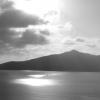Sensor size, crop factor effect aperture as well?
-
Recently Browsing 0 members
- No registered users viewing this page.
-
Similar Content
-
- 46 replies
- 3,605 views
-
- 0 replies
- 388 views
-
- 15 replies
- 688 views
-
- 13 replies
- 2,965 views
-


Recommended Posts
Join the conversation
You can post now and register later. If you have an account, sign in now to post with your account.
Note: Your post will require moderator approval before it will be visible.